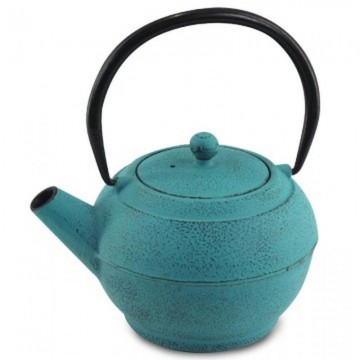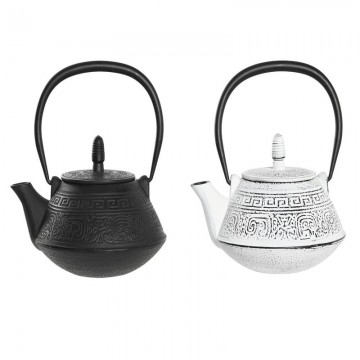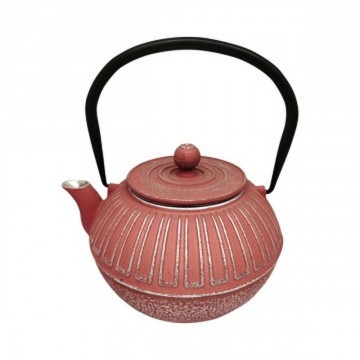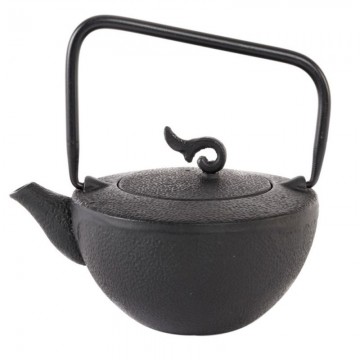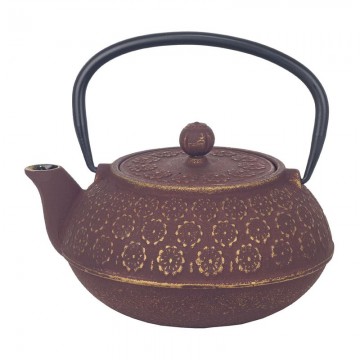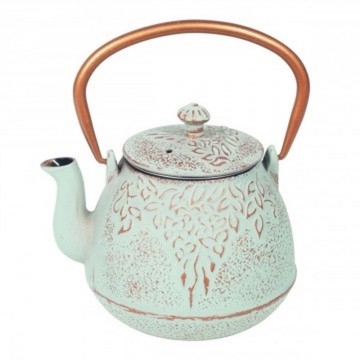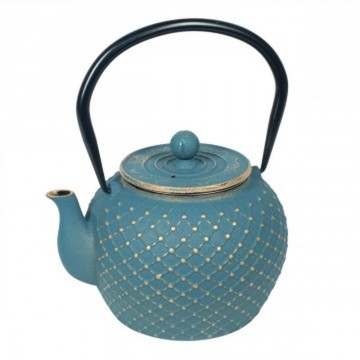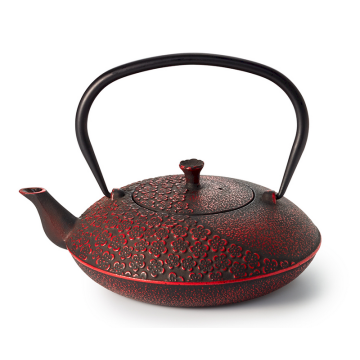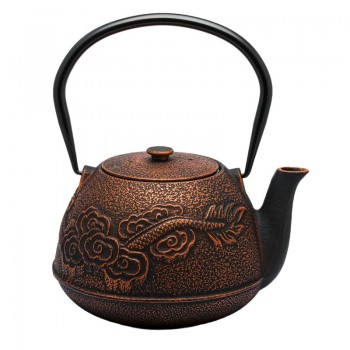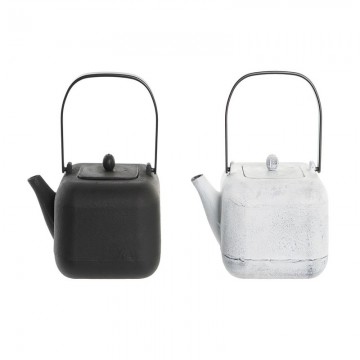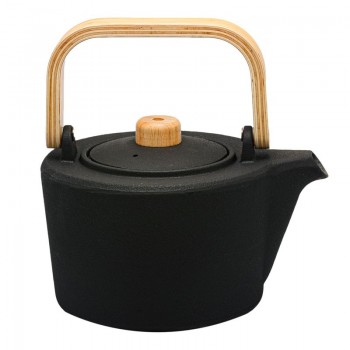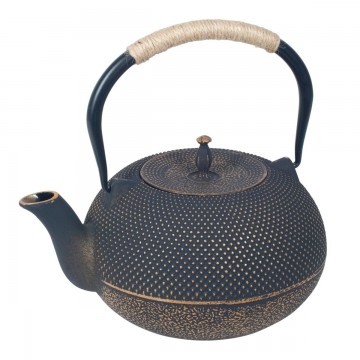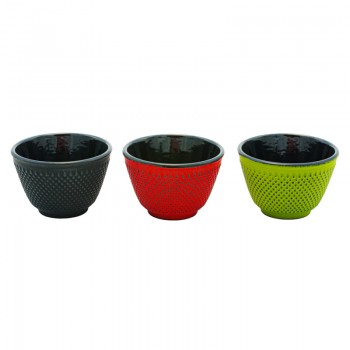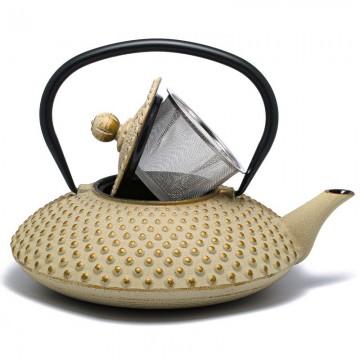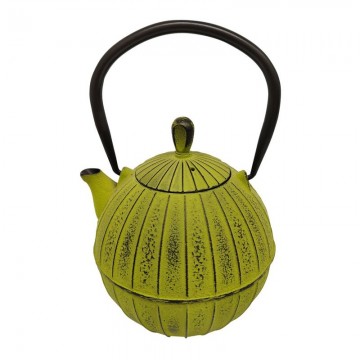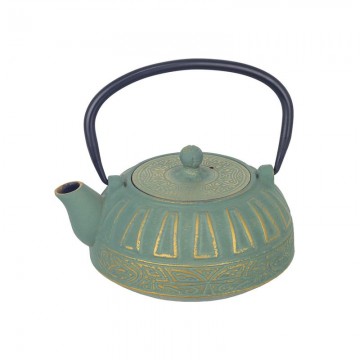The high quality cast iron that makes up the teapot, allows for long-term heat retention. This classic material of the teapots used in the oriental tea ceremony favors the maintenance of the heat in a lasting, constant and uniform way. It keeps the water warm inside the container, and improves the infusion of the loose leaves in the water. In this way, the special teapot retains maximum flavor and aroma. The traditional infusion method is enhanced by the thermal capacity of the cast iron, making the tasting exquisite – it favors the release of aromas and flavours. Thus, it fulfills the art form of tea preparation, essential for many tea lovers. The tea does not cool down immediately, and can be poured slowly, serving guests their cups comfortably. There will be no need to boil new water or keep a hot plate under the teapot. This teapot has been crafted from a durable material, but is also glazed on the inside to prevent rust and oxidation. The cast iron teapot can be used to boil water, or just to prepare tea due to its capacity for a few cups. The capacity of the teapot, approximately 800 ml, allows you to prepare about 2-3 cups of tea.
The teapot with basket diffuser filter
Combined with the container, you will find a stainless steel tea filter, suitable for preparing tea directly inside the teapot. The fine mesh of the strainer ensures that the smallest elements escape, while the wide shape of the basket allows the leaves to expand better in the boiling water, increasing the flavor and aroma of the tea. The function of the teapot, in fact, is to improve the infusion through the total breakdown of the structure of the leaves in the water. The lid helps seal in the flavor and moisture during the brew. The stainless steel, stainless and suitable for food use, makes the infusion safe, while the basket shape also helps to collect the leaves after the infusion. The leaves fit into the filter, to be placed in the enamelled teapot. You can insert the basket and then pour over the preheated hot water (with a saucepan or kettle), if you are not using the cast iron teapot as a kettle, but only for infusion. To use the teapot as a kettle on the stove, it must be filled with water, brought to a boil over an indirect flame, then removed from the stove. You must wait for the desired infusion temperature to proceed with the infusion through the diffuser. Once the soaking time is over, which depends on the type of tea, the removable strainer should be removed. The oriental design of the cast iron teapot In addition to practicality, this cast iron teapot represents a very refined style. A decoration inspired by the Asian colors of red and black, splendid for lovers of tea and oriental design. The teapot has an articulated motif on the surface with Greek, geometric and symbolic decorations, which recall the exotic and synthetic style that unites archaic Middle Eastern, Chinese, Japanese and Indian cultures. The body of the cast iron teapot is trapezoidal, with a suggestive shape as a design furniture. It curves smoothly, with simple lines enhanced by the lively contrast between red and black. The richly decorated lid that creates an original ornamental effect. It has a large spout with a large hole, which favors the direct flow of the liquid, which represents a functional design element that prevents dripping. To this end, the tall handle allows for distance pouring, and is used for ease of movement while the water is hot. The secure grip, given that the heat does not spread to the handle, combines with elegance. The trapezoidal body and top-arched handle complete the geometric aesthetic of this sophisticated teapot. The bold colors make a point of intense color to any decor. For this reason, the teapot is perfect for tea time, but it is also appreciated as a striking oriental design accessory. When not in use, it represents a particular piece for any drawing room or living room. It combines in harmony with ethnic furnishings, classic wood and with a contemporary style that inserts metal, stoneware and concrete elements. The name of the teapot is inspired by the city of Nagoya in Japan, on the island of Honshu in the Pacific Ocean, where refined tea ceremonies take place in historic temples. The cast iron teapot is suitable as an original gift, which pleasantly surprises every tea lover.
How to wash and store your cast iron teapot
The maintenance of the teapot must follow certain rules, since cast iron is subject to the formation of rust. After use, allow the teapot to cool completely. Rinse the teapot by hand in hot water.Wash each part without soap or sponges - they could damage the enamel and the cast iron. If you use kitchen utensils, be careful that they don't scratch the internal enamel. Dry the teapot with a dry and soft cloth, and leave it in the air without the lid. Make sure the inside is dry, especially the spout. Store it in a dry place.

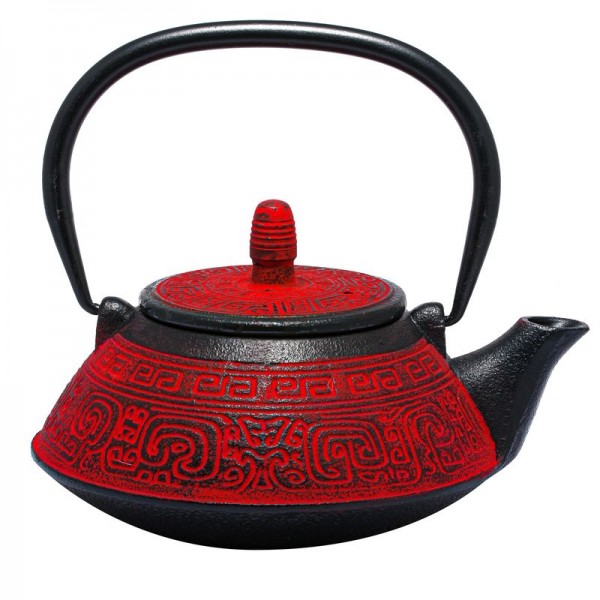







 By buying this product you can collect up to
By buying this product you can collect up to
